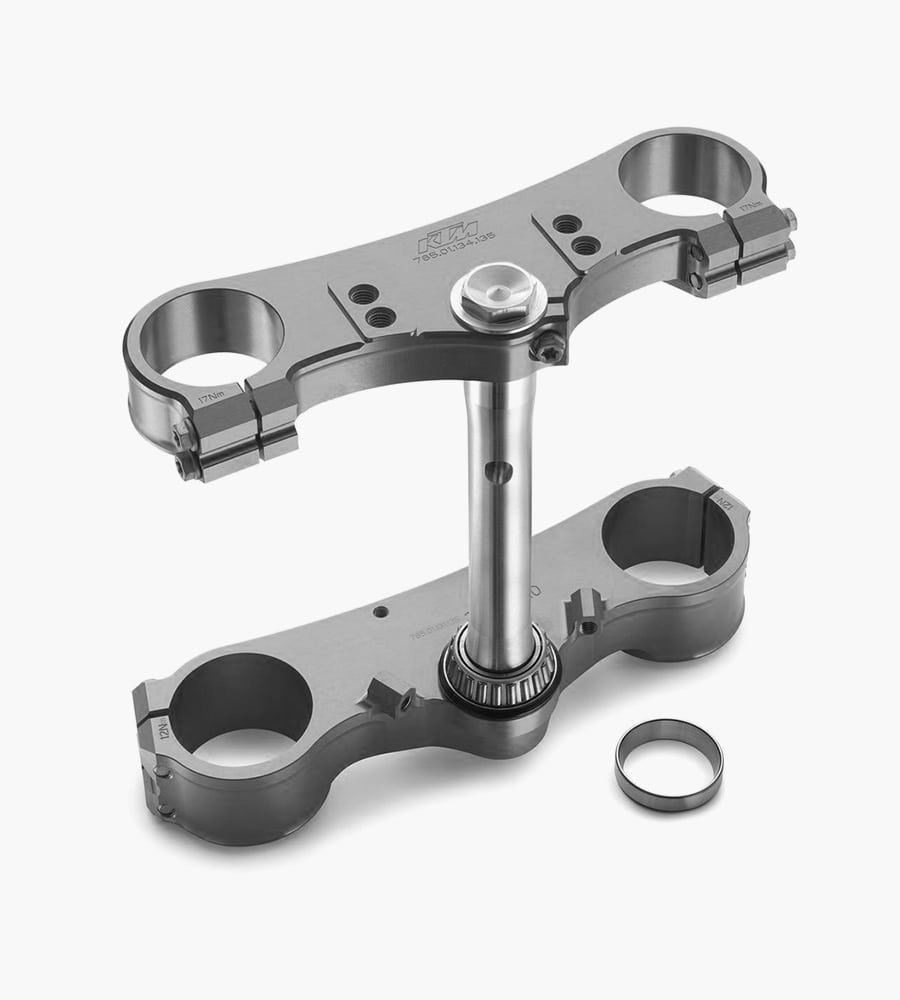Air Conditioning Condenser
$560.00
- Type: A heat exchanger component that is an essential part of the vehicle’s air conditioning (A/C) system. Its function is to dissipate heat from the high-pressure, gaseous refrigerant, causing it to condense into a high-pressure liquid.
- Function: The primary functions of the A/C condenser are critical for the operation of the air conditioning system and cabin comfort:
- Refrigerant Cooling & Condensation: Receives hot, high-pressure gaseous refrigerant from the A/C compressor. As air flows across its fins, heat is transferred from the refrigerant to the outside air, causing the refrigerant to cool down and change state from a gas to a liquid.
- Heat Rejection: Acts as a radiator for the A/C system, releasing the heat absorbed from the vehicle’s cabin into the surrounding atmosphere.
- System Efficiency: Proper heat exchange within the condenser is vital for the overall efficiency and cooling performance of the entire A/C system.
- Components: Typically consists of a series of coiled tubes (often multi-flow parallel plate design for efficiency) with numerous thin fins between them to maximize surface area for heat exchange. It has inlet and outlet ports for refrigerant lines and mounting points for installation. It often includes an integrated receiver-drier or drier cartridge, though sometimes these are separate components.
- Location: Mounted at the very front of the vehicle, usually in front of the engine’s main radiator, to ensure maximum airflow from the vehicle’s forward motion and the cooling fans.
- Material: Most commonly constructed from lightweight and highly conductive aluminum alloys (tubes and fins) due to their excellent heat transfer properties and corrosion resistance.
- Design: Precisely engineered to fit within the confined space of the vehicle’s front end and to optimize airflow and heat exchange for the specific cooling requirements of Maserati’s luxurious cabins.
The Air Conditioning Condenser, identified by Maserati Part Number 228388, is a vital component in the climate control system of your Maserati GranCabrio, GranTurismo, or Quattroporte. While often unseen, tucked away at the front of the vehicle, its efficient operation is directly responsible for providing you with cool, comfortable air inside the cabin, especially important for maintaining a pleasant driving experience in warm conditions.
The condenser functions much like a miniature radiator for your car’s air conditioning system. Hot, high-pressure gaseous refrigerant, having absorbed heat from your vehicle’s interior, is pumped into the condenser by the A/C compressor. As the refrigerant flows through the condenser’s intricate network of tubes and fins, ambient air (drawn in by the vehicle’s forward motion or by the cooling fans) passes over these fins. This process allows the heat to be rapidly transferred from the hot refrigerant to the cooler outside air. As it cools, the refrigerant undergoes a phase change, condensing from a high-pressure gas into a high-pressure liquid. This cooled liquid refrigerant then moves to the next stage of the A/C cycle (the expansion valve and evaporator) to continue the cooling process for the cabin. A properly functioning condenser is crucial not just for cooling, but also for defogging the windshield efficiently, by removing humidity from the air.
Given its exposed location at the front of the vehicle, the A/C condenser is particularly susceptible to various forms of damage:
- Impact Damage: As it’s positioned at the front of the car, it’s vulnerable to direct impacts from road debris such as rocks, gravel, or other foreign objects, which can puncture or damage the delicate fins and tubes.
- Refrigerant Leaks: Punctures from impacts, corrosion, or fatigue cracks can cause refrigerant to leak out of the system. Even a small leak will lead to a gradual loss of cooling performance and eventually a non-functioning A/C system.
- Corrosion: Exposure to road salt, moisture, and environmental pollutants can cause corrosion on the aluminum fins and tubes, reducing their heat exchange efficiency and leading to leaks.
- Debris Accumulation: Over time, leaves, dirt, bugs, and other debris can accumulate between the condenser fins and the main radiator, reducing airflow and impairing heat dissipation, leading to reduced A/C performance.
Symptoms of a failing A/C condenser primarily include a reduction in cooling performance from the air conditioning system, or a complete failure of the A/C to blow cold air. If there’s a leak, you might also notice a hissing sound when the A/C is running (indicating refrigerant escaping) or a visible oily residue (from the refrigerant oil) on the condenser’s surface. Replacing an A/C condenser is a job that requires professional expertise. It involves evacuating the remaining refrigerant from the system, disconnecting the refrigerant lines, removing the old condenser, installing the new one, and then crucially, evacuating the entire A/C system of air and moisture before recharging it with the correct type and amount of refrigerant and lubricant. Specialized equipment is needed for safe handling of refrigerants and proper system charging.
For your Maserati GranCabrio, GranTurismo, or Quattroporte, ensuring the integrity and optimal function of the Air Conditioning Condenser (Part Number 228388) is paramount for maintaining comfortable cabin temperatures, effective defogging, and the overall luxurious driving experience. Replacing a damaged or leaking condenser with a genuine Maserati part ensures the restoration of peak A/C performance and the uncompromising quality expected of your Italian luxury vehicle.


MAECENAS IACULIS
Vestibulum curae torquent diam diam commodo parturient penatibus nunc dui adipiscing convallis bulum parturient suspendisse parturient a.Parturient in parturient scelerisque nibh lectus quam a natoque adipiscing a vestibulum hendrerit et pharetra fames nunc natoque dui.
ADIPISCING CONVALLIS BULUM
- Vestibulum penatibus nunc dui adipiscing convallis bulum parturient suspendisse.
- Abitur parturient praesent lectus quam a natoque adipiscing a vestibulum hendre.
- Diam parturient dictumst parturient scelerisque nibh lectus.
Scelerisque adipiscing bibendum sem vestibulum et in a a a purus lectus faucibus lobortis tincidunt purus lectus nisl class eros.Condimentum a et ullamcorper dictumst mus et tristique elementum nam inceptos hac parturient scelerisque vestibulum amet elit ut volutpat.












Reviews
There are no reviews yet.